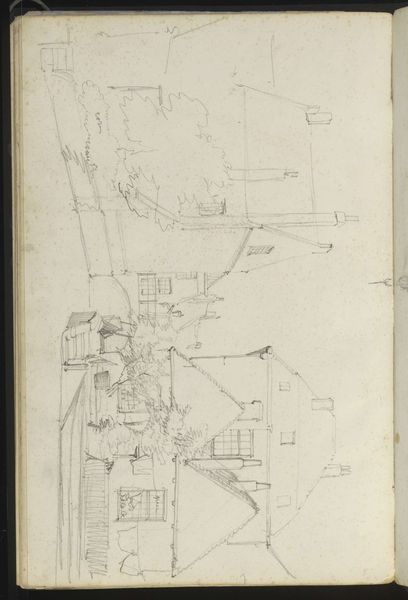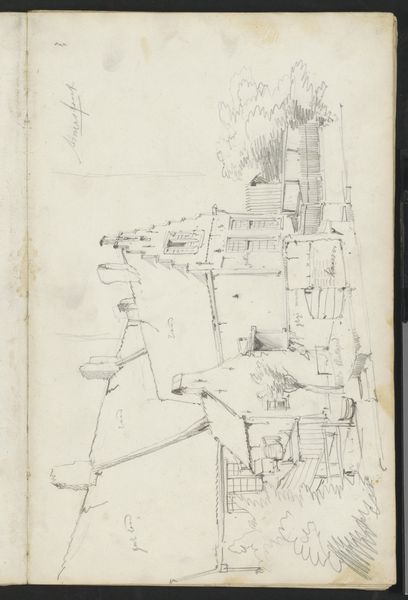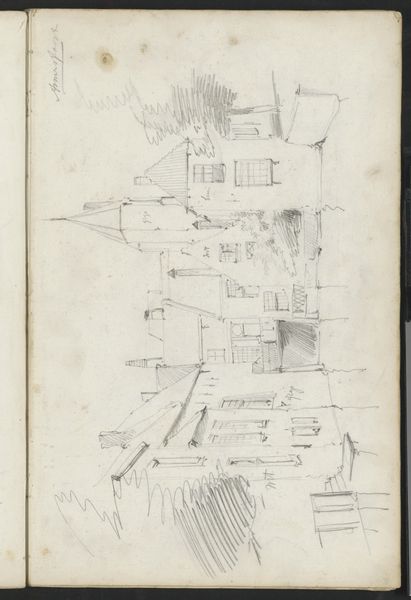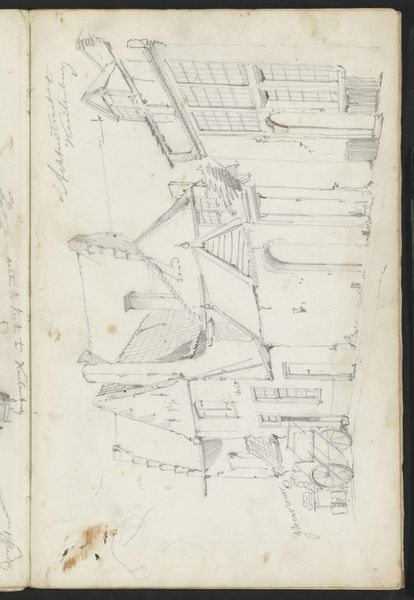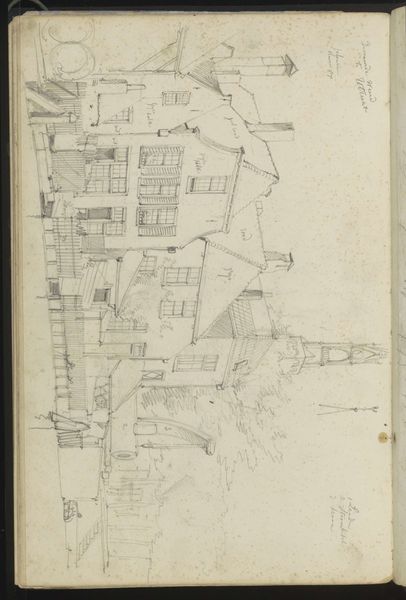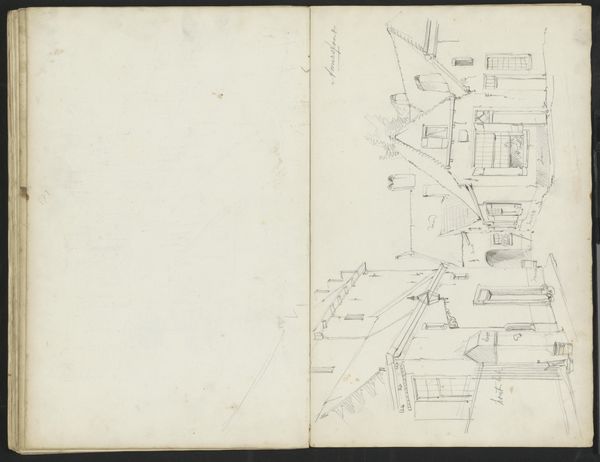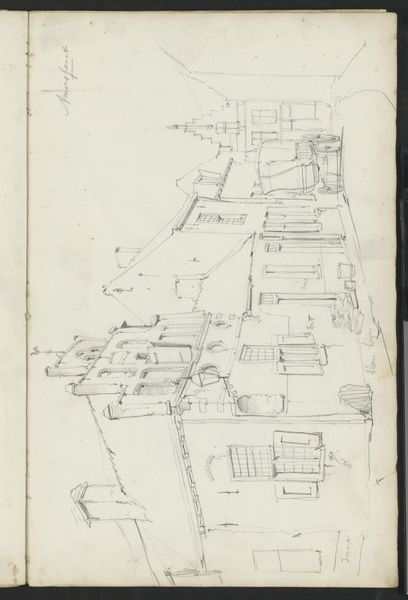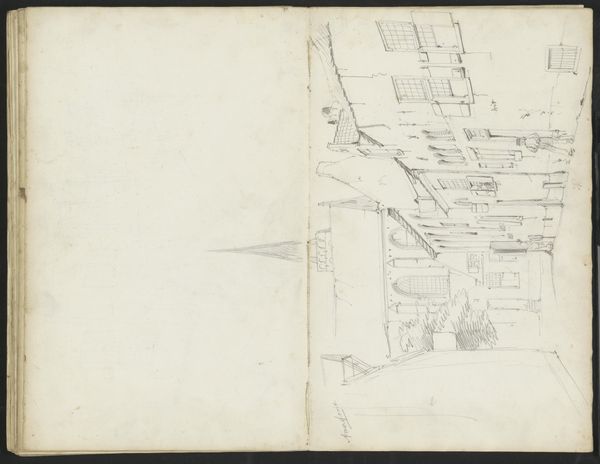
drawing, pencil
#
drawing
#
quirky sketch
#
pen sketch
#
sketch book
#
landscape
#
personal sketchbook
#
sketchwork
#
ink drawing experimentation
#
pen-ink sketch
#
pencil
#
sketchbook drawing
#
genre-painting
#
storyboard and sketchbook work
#
sketchbook art
#
realism
Copyright: Rijks Museum: Open Domain
Willem Koekkoek's "Landsmeerbrug te Culemborg," is a drawing executed with graphite on paper. The artist has rapidly sketched the architectural landscape of Culemborg. The choice of graphite as a medium lends the work an immediate, provisional quality. It invites us to consider the act of drawing as both a process of observation, and a means of documentation. This bridge is rendered with an economy of line. Note how he quickly captures the essential forms of the bridge and the buildings. Koekkoek's approach may reflect the growing urbanization and industrialization of the Netherlands during his time. The bridge symbolizes connectivity and progress but also perhaps the changing social dynamics brought about by industrial development. By focusing on the materials and the act of drawing itself, we can understand the cultural significance of Koekkoek's work. It challenges traditional notions of high art by highlighting the value of everyday scenes and the skills involved in their depiction.
Comments
No comments
Be the first to comment and join the conversation on the ultimate creative platform.
